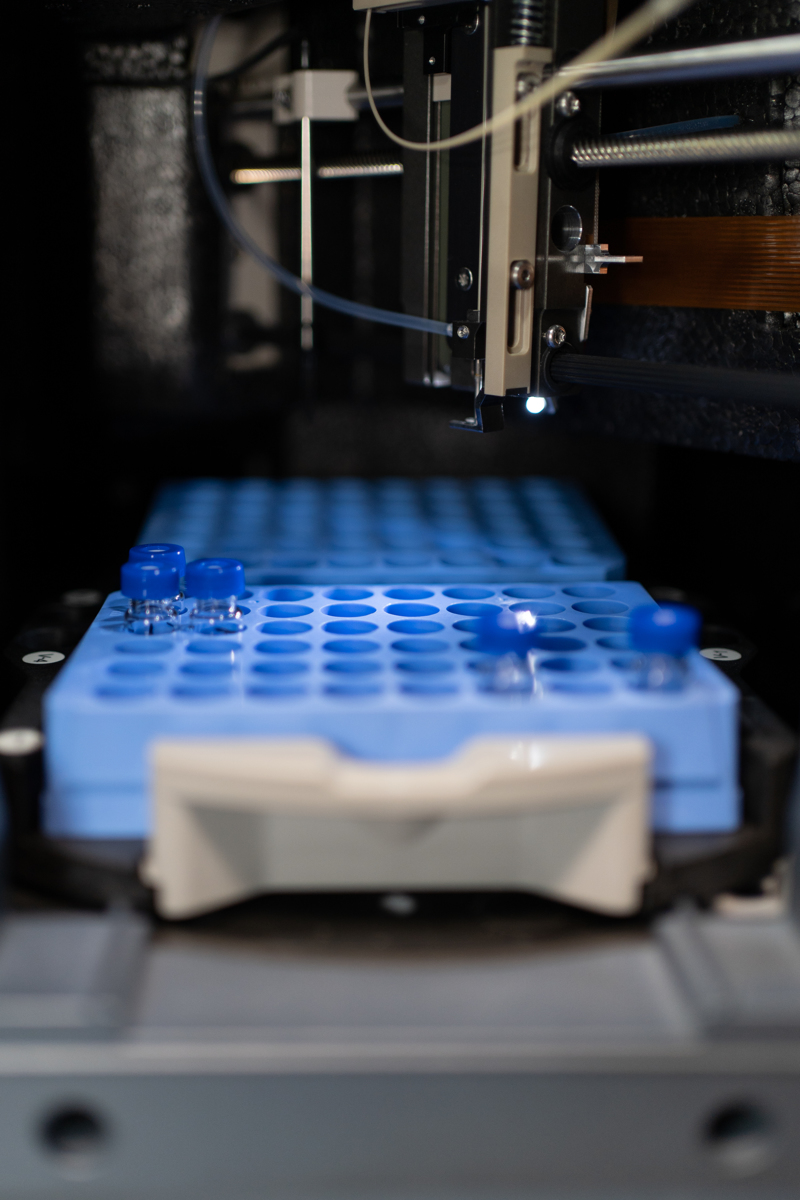ChromLogD: Adding another string to our bow in analytical services
Having found ourselves with some spare analytical capacity, following our purchase of another UHPLC instrument last year, we decided to explore the option of measuring chromLogD.
Why measure LogD?
Classically, LogD is a measurement of lipophilicity, represented as a partition coefficient of an analyte between octanol and water. This information can be used by medicinal chemists to assess the drug-like nature of candidate compounds. Too lipophilic, and a drug may lack selectivity and risk adverse side-effects. If a drug lacks lipophilicity, it is unlikely to be absorbed into the body and therefore reach it’s target. Christopher Lipinski discussed LogD in his well-known ‘Rule of 5’. This, amongst other parameters, states a drug-like molecule is likely to have a LogD <5.
Why measure chromLogD?
Octanol-water ‘shake-flask’ LogD measurements are seen as the ‘Gold Standard’ for lipophilicity. However, there are some draw-backs – not least the fact the process is relatively time consuming. Other disadvantages include a perceived lack of accuracy for analytes on the extreme ends of the scale. This is due to the need to analyse both the octanol and water phases separately by HPLC, and analyte concentration in the unfavoured phase may be difficult to quantify. Another disadvantage is that the presence of the OH group in octanol. This, via H-bonding interactions, may overstate lipophilicity of some polar analytes by increasing their concentration in the lipophilic phase.
Reverse-phase chromatography can offer an alternative but comparable biphasic system that can deliver results at a much higher throughput.
With a mechanism of retention dictated by lipophilicity, retention time on Reverse-phase HPLC can very quickly offer a value that can be related to LogD. This offers a route to measuring LogD much more efficiently, whilst removing the other disadvantages of the shake-flask method as retention time rather than concentration/peak area is the data recorded, and a polar OH group is no longer present in the lipophilic phase.
Using CHI in chromLogD measurement
A method for measuring chromLogD can be quickly established by analysing a set of samples with known shake-flask LogD values and plotting retention time against LogD. Retention time of an analyte can then be applied to a line-of-best-fit to extrapolate chromLogD. However, deriving data from shake-flask values carries over the potential inaccuracies discussed earlier.
With this in mind, we opted to derive chromLogD using Chromatographic Hydrophobicity Index (CHI) values. CHI, like shake-flask LogD, is an experimental measurement of lipophilicity. It is defined as the %MeCN required in a isocratic reverse-phase system to provide an analyte with a retention time that is double that of the system dead-volume (where retention factor, k, = 1). Once again, a set of samples with known CHI values can then be analysed on a fast gradient method and retention time can be plotted against CHI. Via a simple calculation, CHI can be converted to LogD to give comparable data.
In this way, CHI and CHILogD can be reported as an alternative measurement of lipophilicity. All whilst offering comparison to existing LogD data sets and without some of the drawbacks of relying on ‘shake-flask’ data for calibration.
For further information about Reach’s analytical services, click here.
For further reading on CHI and LogD, click here.

